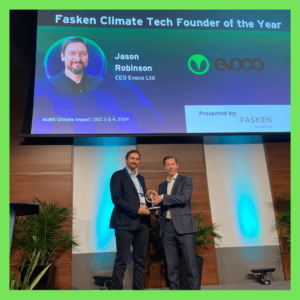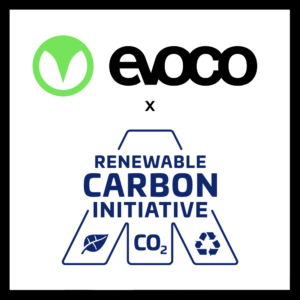FATES: The Raw Materials

The bioeconomy and its role in mitigating climate change
Measuring impact of sustainable practices is key to driving effective change. From fashion to furniture, from the clothes we wear to the cars we drive, producing consumer goods results in billions of tonnes of GHG (greenhouse gas) emissions – contributing to climate change. Globally the footwear industry produces 700 megatons of CO2eq of GHG emissions every year, up to 40% of the emissions are attributed to raw materials manufacturing and extraction.[1]
Part of the solution is transitioning to a plant or bio-based economy.
The bioeconomy can be defined as using renewable biobased resources sustainably to produce food, energy and goods. It allows industries to tap into biomass available from agricultural, forestry feedstocks and waste streams that are critical to achieving a net-zero, sustainable future.
The power of plants
Plants are one of the most abundant renewable resources on earth. Nature produces more plant matter in one day than the sum of all the petrochemistry-based materials produced globally per year.[2] Plant-based chemistry is comparable to petrochemicals without the negative impact, plants have emerged as a sustainable alternative such as coconut husk, ground stone fruit pits or lignin.
The impact of renewable plant-based materials on the environment is far less compared to oil-derived counterparts. By conducting a life cycle analysis, Evoco is able to measure the impact of its plant-based material technology, FATES®, from cradle to gate.
The results are clear, FATES® reduces GHG emissions at the source by up to 70%; using plant-based raw materials results in a substantial step change.
FATES® was designed to be feedstock agnostic and adapt to local plant feedstocks across the globe
FATES® is feedstock agnostic material technology, leveraging raw materials derived from a variety of plant by-products. The technology works with a variety of inputs from agricultural, forestry, by-products and waste. We can adapt to a variety of first and second feedstocks, depending on local supply chains.
Our feedstock today & regenerative farming
FATES® current feedstock includes field corn. Field corn widely available, and sustainably cultivated in the North American supply chain. Our raw material does not compete with the food supply. Our technology uses the low-calorie starch by-products leftover (something humans cannot consume) after the corn is processed for animal feed and human consumption. This Ensures that no potential food source or land is diverted to non-food requirements. Currently dedicated arable land for biopolymers is 0.015% and is estimated to increase to 0.058% in 2026. This figure is still less than 0.1% of total arable land and equates to 0.004% of the land use for food & feed.[3]
To put things in perspective, a quarter of food grown is discarded, if only one tenth was allocated to biopolymers, it would allow enough raw materials to replace all petrochemical based plastics.[4]
Our path tomorrow
Future feedstocks include biomass materials such as castor oil, nutshell oils and waste residue, lignin, and algae with further potential to use the 2nd generation agricultural wastes. With sustainability the end goal, life cycle analysis of other biomass feedstocks and waste show that there is no guarantee lower environmental impact because of added steps.
As technology advances, we will continue to monitor and quickly adapt to the most sustainable feedstock options available.
References
[1] Quantis. (2018). Measuring Fashion: 2018 Insights from the Environmental Impact of the Global Apparel and Footwear Industries study. Retrieved April 25, 2022, from https://quantis-intl.com/report/measuring-fashion-report/
[2] Lupton, M. (2017, May 24). Plant Matter Outweighs Petrochemicals as the Building Blocks for the Future. AZoCleantech.
[3] European Bioplastics (2021), FAO Stats (2020), nova-Institute (2021), and Institute for Bioplastics and Biocomposites (2019), University of Virginia (2016). Info: www.european-bioplastics.org




